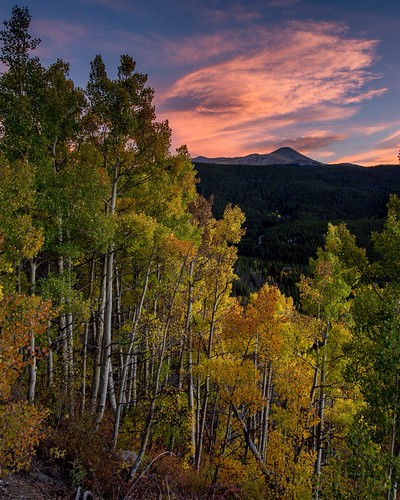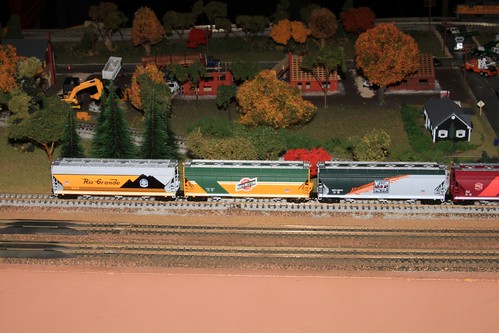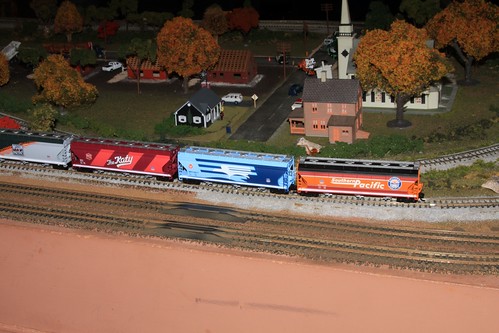 |
| The rusting cab of Denver & Rio Grande Western GP30 engine 3011 sits near the museum's restoration roundhouse awaiting the day when she will be brought back to life again. Photo: Christopher May |
 |
| EMD GP30 illustration by Tom Fawell |
 |
| The rusting cab of Denver & Rio Grande Western GP30 engine 3011 sits near the museum's restoration roundhouse awaiting the day when she will be brought back to life again. Photo: Christopher May |
 |
| EMD GP30 illustration by Tom Fawell |
 |
| Very little could seem to have changed from this sunset over Boreas Pass to the time when the first steam whistles echoed over the Blue River Valley. Photo: Christopher J. May |
 |
| D&RGW #683, the only standard gauge Rio Grande steam engine known to survive is preserved at the Colorado Railroad Museum in Golden, Colorado. The first outdoor exhibit most encounter at the museum, the engine is quite popular with the young (and young at heart) who want to ring the engine's bell. Photo: Christopher J. May |
 In 2001, I took advantage of a last minute invitation Memorial Day weekend to drive with my then-5 year-old daughter to Durango to ride the Silverton train. Very good memories from that trip still warm my heart. The day before our trip, we hit the gift shop and I found the Rio Grande Main Line Thru the Rockies sign hanging above the checkout. It surprises me to admit it, but it meant something to be able to buy that sign in the same building that had doubtless held General Palmer and so many other railroad men and women over the years.
In 2001, I took advantage of a last minute invitation Memorial Day weekend to drive with my then-5 year-old daughter to Durango to ride the Silverton train. Very good memories from that trip still warm my heart. The day before our trip, we hit the gift shop and I found the Rio Grande Main Line Thru the Rockies sign hanging above the checkout. It surprises me to admit it, but it meant something to be able to buy that sign in the same building that had doubtless held General Palmer and so many other railroad men and women over the years.


 |
 |
 |
| Robert LeMassena photo by Matt Isaacks |
Bob left us a great deal of his amassed knowledge through his books - the most notable to most Rio Grande fans being "Rio Grande... to the Pacific!" RGTTP is an invaluable piece of work, and is still my go-to reference for the Grande's often convoluted historical timeline.Holmes also speculated that the Colorado Railroad Museum will have a memorial event of some kind in the near future.
 Trains magazine also presented an obituary in its news wire, noting his 35 bylines and numerous stories for the magazine dating from 1963. His lifelong passion for railroads led to many stories, op-ed pieces and industry articles, with much of his work centered on steam locomotive design and operation, which was a natural considering his bachelors degree in mechanical engineering.
Trains magazine also presented an obituary in its news wire, noting his 35 bylines and numerous stories for the magazine dating from 1963. His lifelong passion for railroads led to many stories, op-ed pieces and industry articles, with much of his work centered on steam locomotive design and operation, which was a natural considering his bachelors degree in mechanical engineering.  |
| Colorado's cities (red) and railroads (dashed lines). Quick and ugly map created on nationalatlas.gov The northern half of the Front Range Urban Corridor is highlighted. |
The track at South Colorado Springs, Colorado is out of service due to washout. South Colorado Springs, Colorado is approximately 72 miles south of Denver, Colorado. The main track is expected to return to service later this evening, Friday, September 13, 2013.
The tracks at Boulder, Colorado and Loveland, Colorado are out of service due to multiple washouts. Boulder, Colorado is approximately 30 miles northwest of Denver, Colorado, and Loveland, Colorado is approximately 52 miles north of Denver, Colorado. No estimated return to service has been issued yet. Customers between Broomfield, Colorado, and Dixon, Colorado, will not be serviced until track is restored.
 |
| Fall colors on Kebler Pass 2012 Photo by Aakash sahai, CCL3.0 |